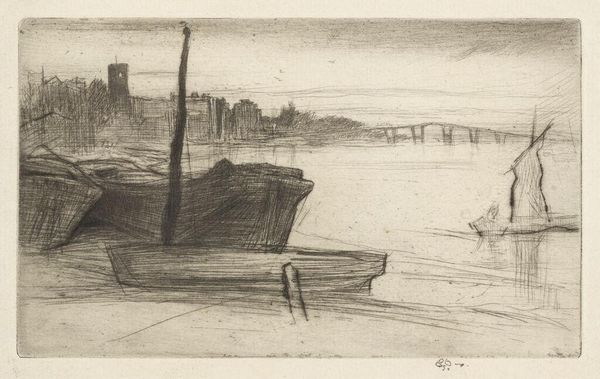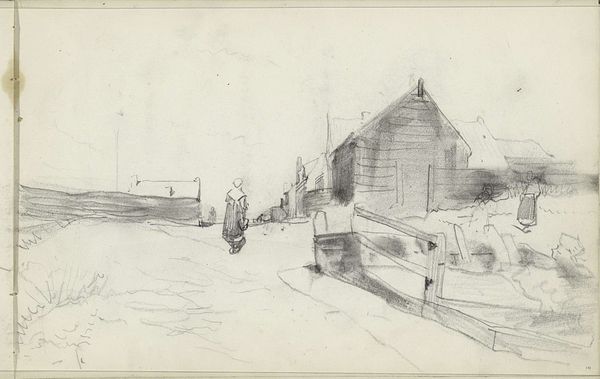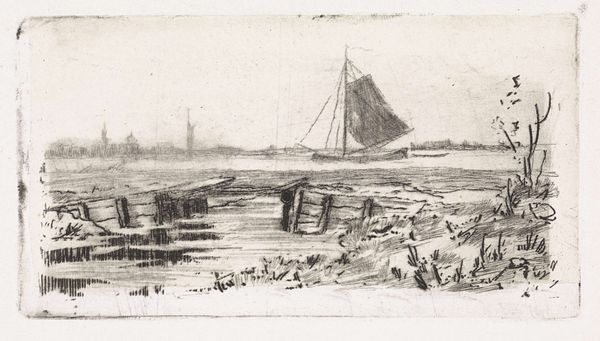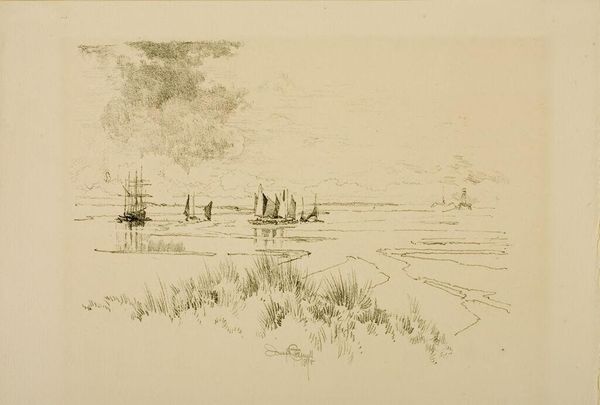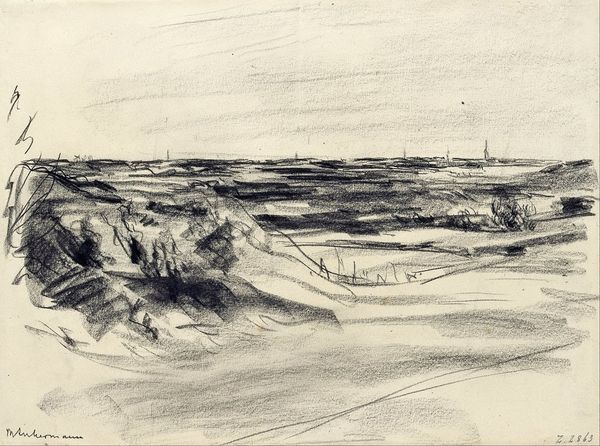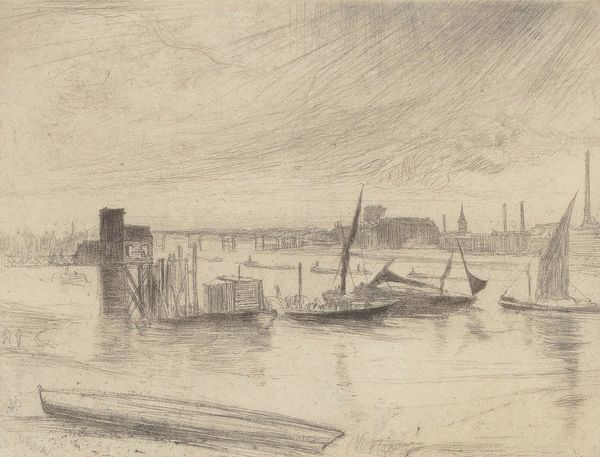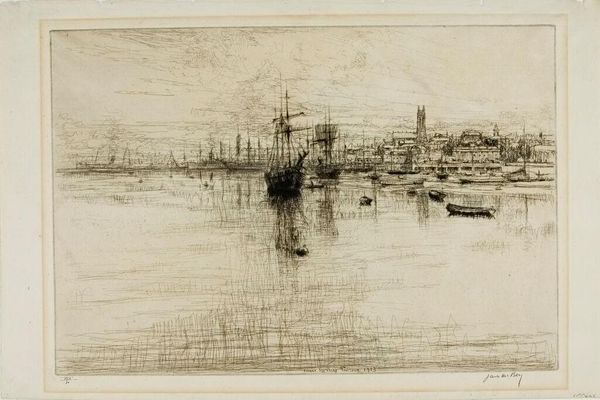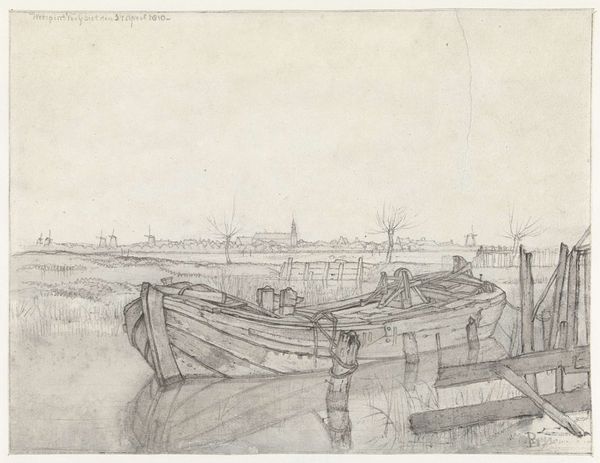
Dimensions: plate: 10.2 Ã 17 cm (4 Ã 6 11/16 in.) sheet: 12.8 Ã 19.2 cm (5 1/16 Ã 7 9/16 in.)
Copyright: CC0 1.0
Curator: James McNeill Whistler’s etching, "Chelsea Bridge and Church," offers a glimpse into late 19th-century London. The scene presents a quiet Thames vista, etched with delicate lines. Editor: It's striking how the dense, almost chaotic, cross-hatching around the boats contrasts with the serene, open sky. The materiality of the etching process emphasizes the gritty realities of the industrial riverfront. Curator: Absolutely. Whistler was engaging with the aesthetics of the industrial era, but also, perhaps, critiquing the human cost of progress by choosing such subjects. Editor: Right, but also think about the physical labor of etching itself, pressing the plate, the acid biting into the metal. These processes echo the labor happening on the docks. Curator: The work definitely invites us to consider labor and class within the social and political landscape of Victorian England. I find his engagement with marginal spaces to be really compelling. Editor: I agree, and thinking about the material conditions of this piece also adds a layer to our understanding of the scene. Curator: This etching provides a fascinating perspective on the changing urban landscape of London. Editor: Indeed. It's a powerful testament to the confluence of industry, labor, and artistic representation.
Comments
No comments
Be the first to comment and join the conversation on the ultimate creative platform.
